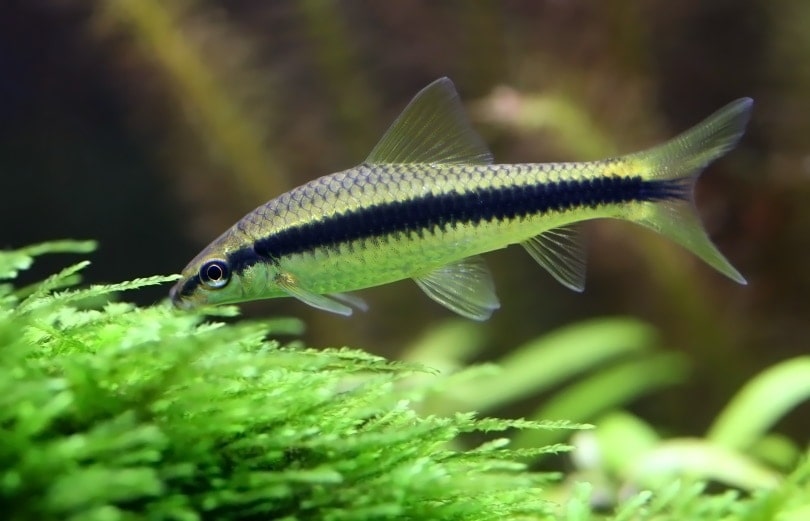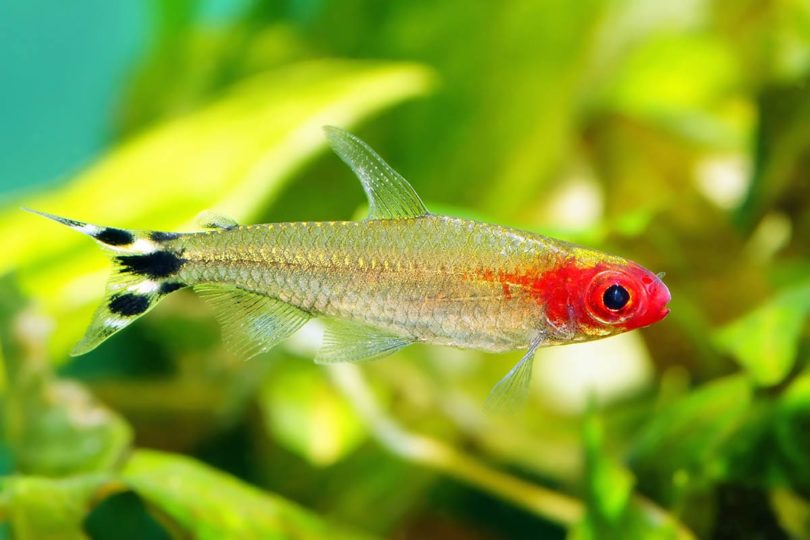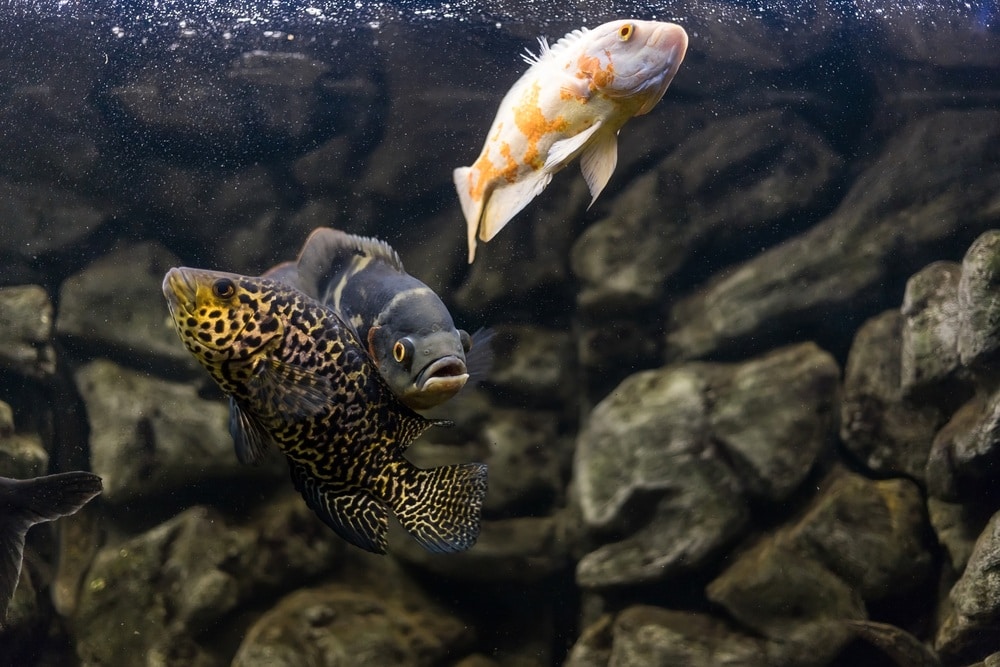12 Tank Mates for Sunset Honey Gouramis (With Pictures)

Updated on
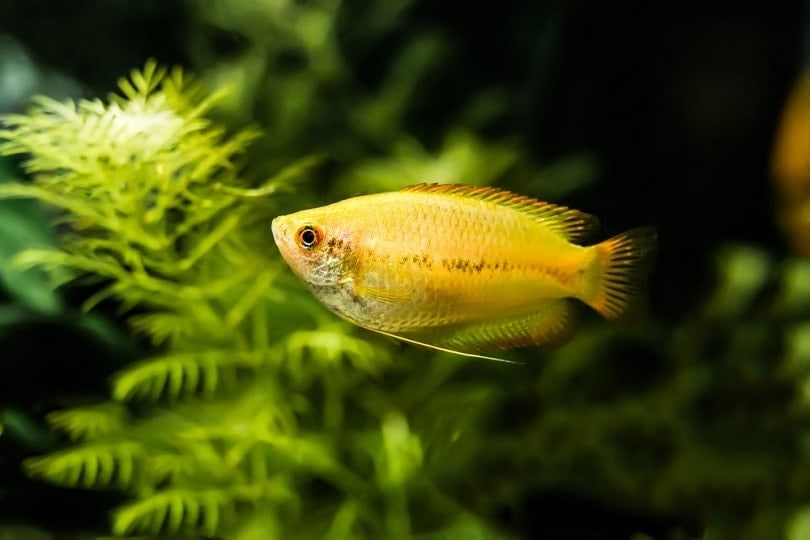
Click to Skip Ahead
Sunset Honey Gouramis are found in freshwater ponds in northern India and Bangladesh, but all the fish for the pet trade are bred in captivity. They are peaceful, hardy fish that are great for inexperienced aquarium keepers, but they can be shy and timid at first, so they need plenty of vegetation to hide away in.
Honey Gouramis are active, entertaining, easy to look after, and a popular choice around the world for home aquariums. They are small and beautiful fish that don’t require much space, but if their tank is too cramped, they can be prone to stress and even aggressive behavior. This is why choosing tankmates for them can be tricky and often stressful!
We rounded up 12 of our favorite tankmates for Gourami Fish to help you create a beautiful and peaceful community in your home aquarium. Let’s get started!
The 12 Tank Mates for Sunset Honey Gouramis
1. Cory Catfish (Corydoras panda)
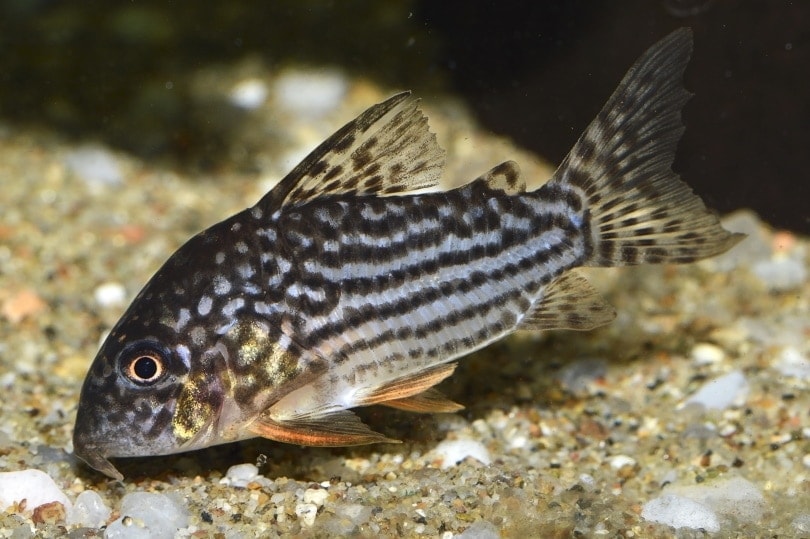
| Size: | 1–2.5 inches (2.5–6.3 cm) |
| Diet: | Omnivore |
| Minimum tank size: | 15 gallons (56.7 liters) |
| Care Level: | Easy |
| Temperament: | Peaceful |
The Cory Catfish, or Panda Cory, is named after their black and white patterning and is an ideal choice to add to your Gourami tank. They are peaceful and docile fish that mostly inhabit the bottom of the tank and will leave the top-dwelling Gouramis alone. They also stay fairly small, so they won’t take up much space in your tank.
2. Glowlight Tetra (Hemigrammus erythrozonus)
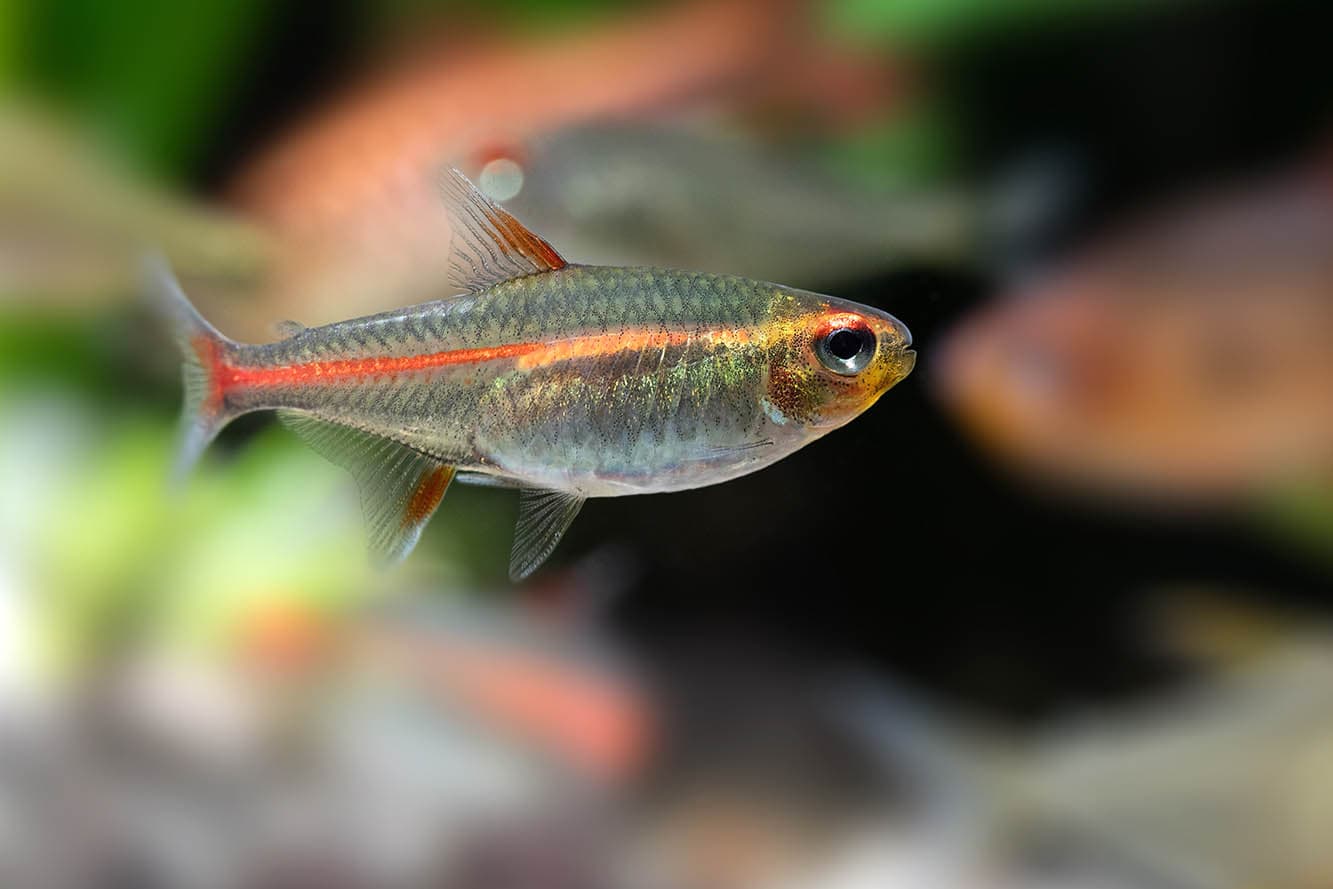
| Size: | 1–1.5 inches (2.5–3.0 cm) |
| Diet: | Omnivore |
| Minimum tank size: | 15 gallons (56.7 liters) |
| Care Level: | Easy |
| Temperament: | Peaceful |
Tetras are a great addition to any aquarium, but Glowlight Tetras are a little less brightly colored than their cousins, so there is less chance that your Gourami will see them as rivals. They are active yet peaceful and easy-to-care-for schooling fish that inhabit the lower parts of the tank. They love to have a bit of plant cover, making them a beautiful addition to your Gourami aquarium.
3. Zebra loach (Botia striata)
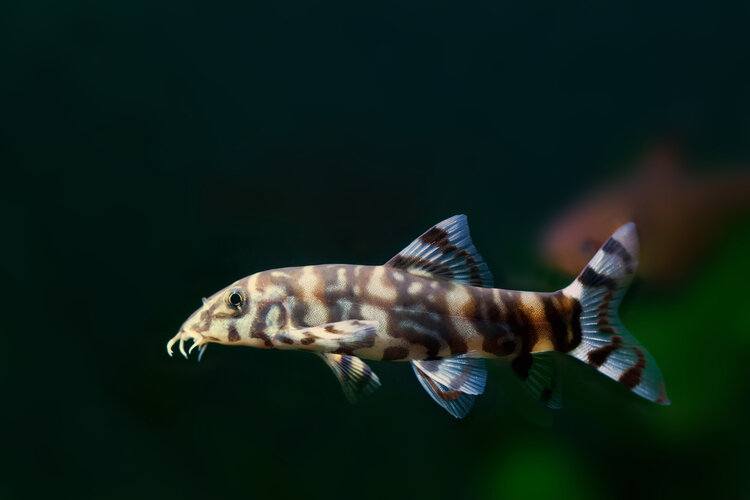
| Size: | 3–4 inches (7.6–10.1 cm) |
| Diet: | Omnivore |
| Minimum tank size: | 30 gallons (113.5 liters) |
| Care Level: | Easy |
| Temperament: | Peaceful |
Zebra Loaches typically don’t do well with other fish and generally stick to the bottom of the tank, but because Gourami tends to stay closer to the surface, they can make great tankmates. They are more active at night but are still fairly active during the day and enjoy hiding among vegetation or rocks. They will also feed on all the food that your Gourami leaves behind, helping to keep your tank clean.
4. Harlequin Rasbora (Trigonostigma heteromorpha)
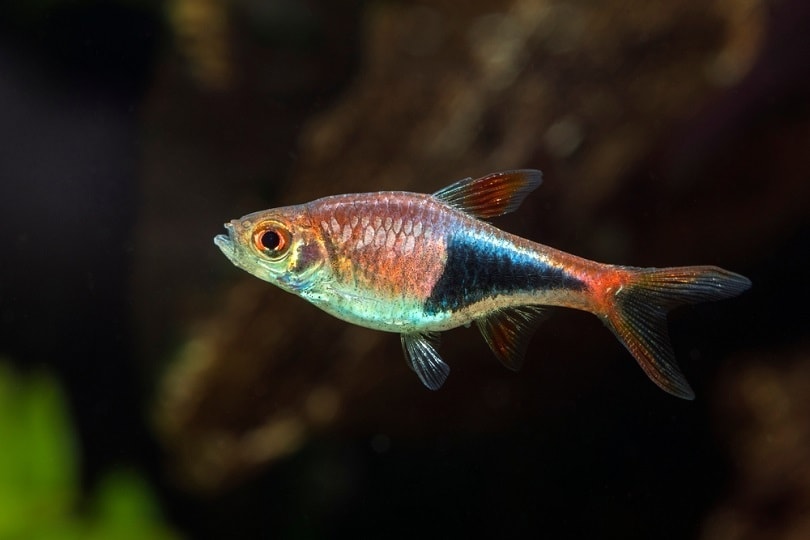
| Size: | 1.5–2 inches (3.8–5.0 cm) |
| Diet: | Omnivore |
| Minimum tank size: | 10 gallons (37.8 liters) |
| Care Level: | Intermediate |
| Temperament: | Peaceful |
The Harlequin Rasbora originates in the same area as the Gourami and thus, requires almost exactly the same tank conditions, making them ideal tankmates. They will also eat the same food and are rarely aggressive with other fish. They have a beautiful silver body with black patches and distinctive orange fins and are a striking addition to your aquarium.
5. Pineapple Swordtail (Xiphophorus hellerii)
| Size: | 1–2 inches (2.5–5 cm) |
| Diet: | Omnivore |
| Minimum tank size: | 20 gallons (75.70 liters) |
| Care Level: | Easy |
| Temperament: | Peaceful |
The Pineapple Swordtail is a beautiful fish, with a distinctive elongated lower lobe on their tail that gives the fish their name. They are exceedingly friendly fish that are rarely aggressive toward other fish and generally stick to the middle layer of the tank, making them great companions to Gouramis. They are also hardy fish and not picky eaters—they’ll happily eat your Gourami’s excess food!
6. Bristlenose Pleco (Ancistrus Cirrhosus)
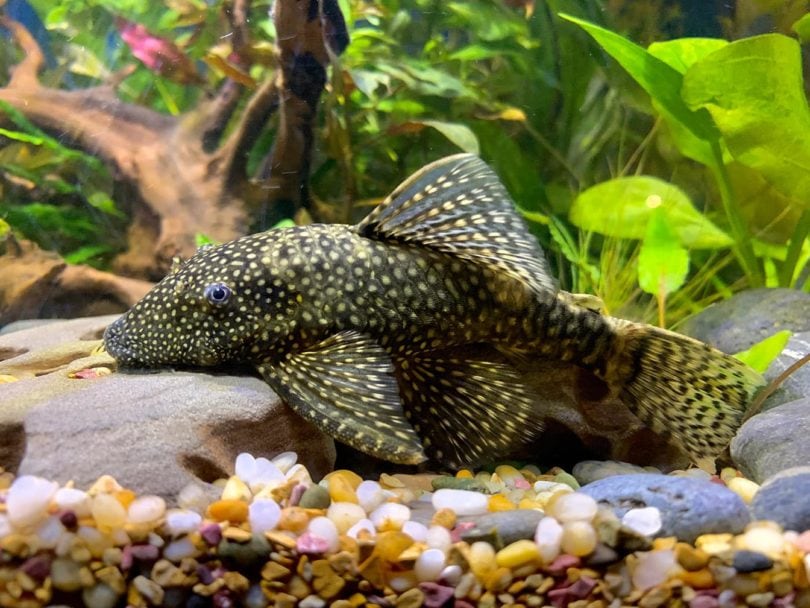
| Size: | 3–5 inches (7.6–12.7 cm) |
| Diet: | Herbivore |
| Minimum tank size: | 30 gallons (113.5 liters) |
| Care Level: | Easy |
| Temperament: | Peaceful and sociable |
This Catfish variety spends most of its time at the bottom of the tank, feeding on the algae and helping keep your Gourami’s tank clean. They are peaceful, social, and docile fish that prefer to keep to themselves, although they need a fairly large tank because they can reach up to 5 inches long. If you have a large enough tank to house a few, they can make great tank mates for your Gouramis.
7. Otocinclus Catfish (Otocinclus)
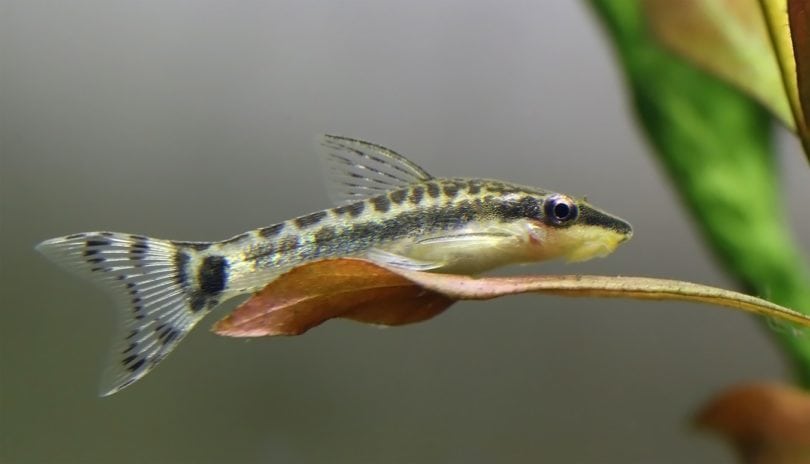
| Size: | 1.5–2 inches (3.81–5 cm) |
| Diet: | Herbivore |
| Minimum tank size: | 10 gallons (37.8 liters) |
| Care Level: | Intermediate |
| Temperament: | Peaceful |
An algae-eating species that will help keep your tank clean, the Otocinclus Catfish are peaceful, unobtrusive fish that are favorite tankmates for many different fish species, including Gouramis. The only downside to these fish is that they are highly sensitive and fragile, and they can be a challenge to care for with beginners. Also, you’ll need to make sure you don’t have too many because they’ll keep the tank too clean and be left without any suitable food.
8. Pygmy Corydoras (Corydoras pygmaeus)
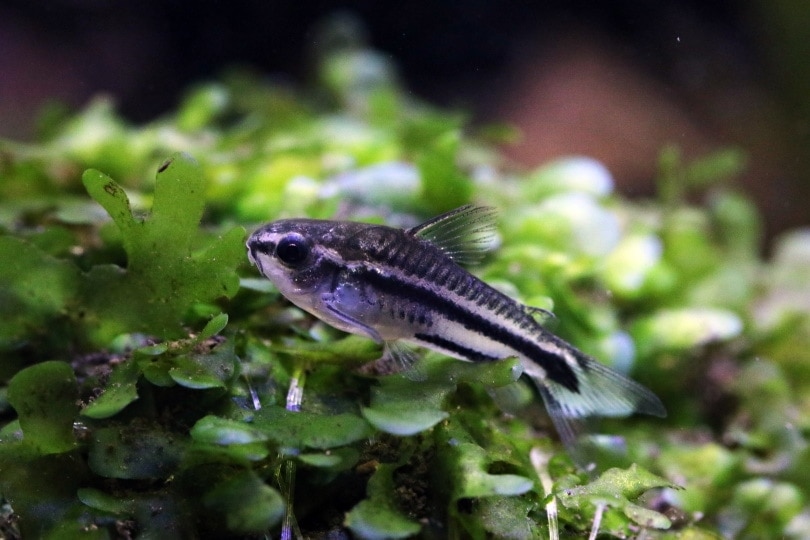
| Size: | 0.7–1.3 inches (1.7–3.3 cm) |
| Diet: | Omnivore |
| Minimum tank size: | 15 gallons (56.7 liters) |
| Care Level: | Easy |
| Temperament: | Peaceful |
The Pygmy Cory is a tiny yet active fish and is a fun species to observe in your aquarium. They are mostly bottom feeders, so they will stay far away from your Gouramis, although they may visit the middle layer from time to time. They are peaceful and easy to care for but need to be kept in large groups. Otherwise, they are known to be extremely shy and will rarely leave their hiding places.
9. Mystery Snail (Pomacea bridgesii)
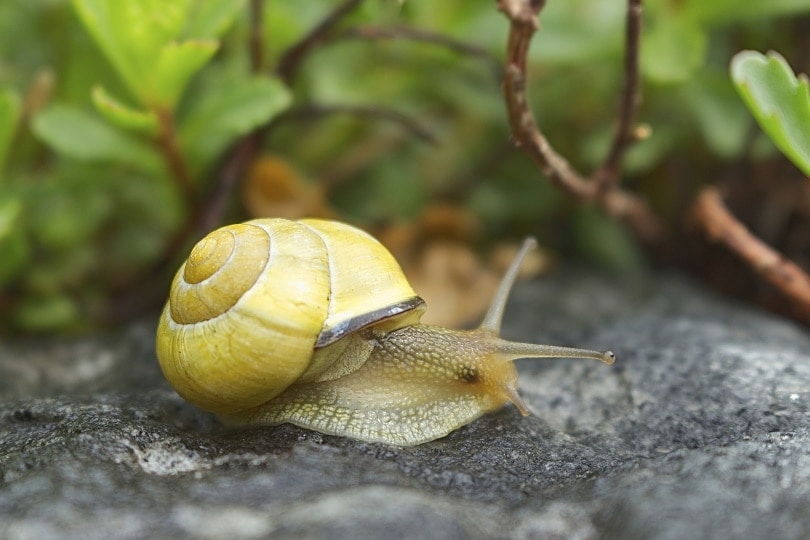
| Size: | 1–2 inches diameter (2.5–3 cm) |
| Diet: | Herbivore |
| Minimum tank size: | 15 gallons (56.7 liters) |
| Care Level: | Easy |
| Temperament: | Docile |
Snails are a great addition to any aquarium, and Mystery Snails in particular are small, algae-eating animals that will leave your plant life alone. They may be small but are large enough to withstand bites from your Gouramis and are great for keeping your tank algae-free. They are also beautiful and come in a range of unique colors.
10. Ember Tetra (Hyphessobrycon amandae)
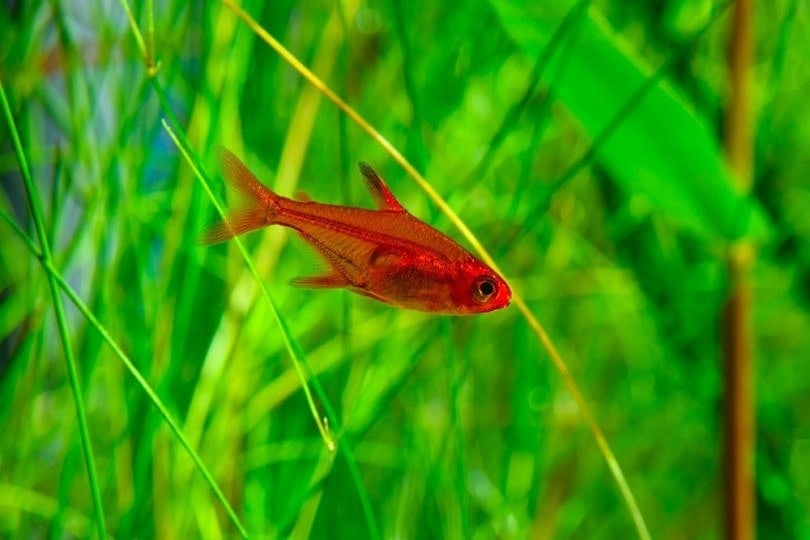
| Size: | 0.8 inches (2 cm) |
| Diet: | Omnivore |
| Minimum tank size: | 15 gallons (56.7 liters) |
| Care Level: | Easy |
| Temperament: | Peaceful |
Ember Tetras can add a beautiful burst of color to your aquarium, and since they are schooling fish and aren’t too active, your Gouramis will likely leave them alone. They have similar tank requirements to Gouramis, so they are ideal tankmates. You’ll want to have a school of at least 12 of these fish, with plenty of plant life for them to hide away in.
11. The Common Pleco (Hypostomus Plecostomus)
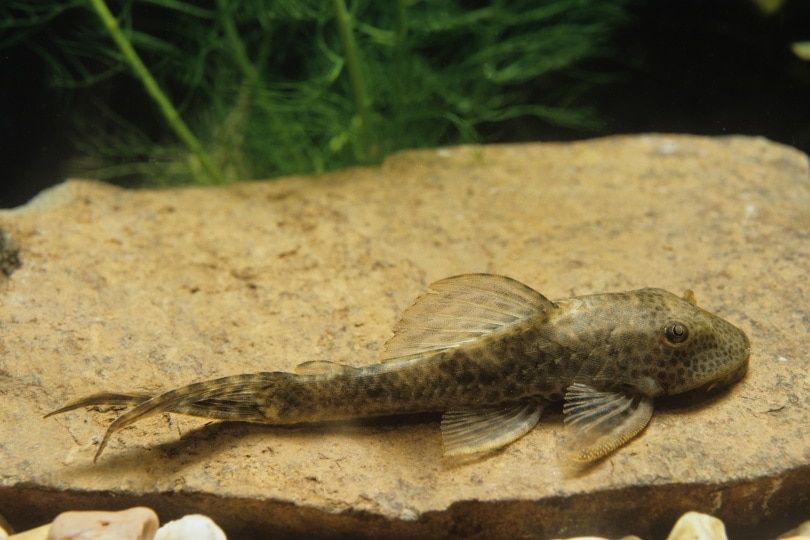
| Size: | 15–20 inches (38–50 cm) |
| Diet: | Omnivore |
| Minimum tank size: | 70 gallons (264 liters) |
| Care Level: | Intermediate |
| Temperament: | Peaceful |
The common Pleco, also known as the Suckermouth Catfish, is a bottom-feeding species, and this along with their large size will make your Gouramis steer clear of them. They are peaceful fish, though, feeding mainly off algae and rarely fighting with other fish species. If you have a large aquarium of at least 70 gallons, these bottom feeders can help keep it clean. They make a beautiful addition to any tank.
12. Amano Shrimp (Caridina japonica)
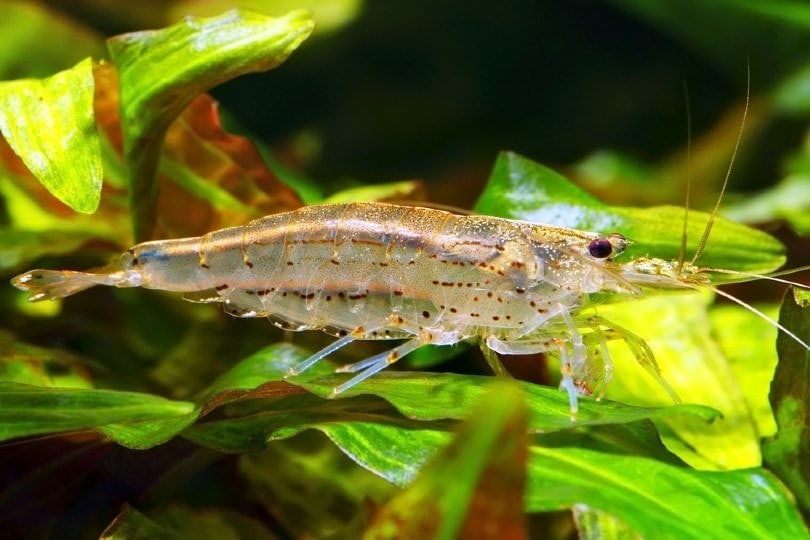
| Size: | 1–2 inches (2.5–3 cm) |
| Diet: | Omnivore |
| Minimum tank size: | 10 gallons (37.8 liters) |
| Care Level: | Easy |
| Temperament: | Peaceful |
Amano Shrimp are great tankmates for Gouramis because they are large enough to avoid being eaten and make unique additions to your aquarium. They are easy to care for and feed off algae and leftovers, so you won’t need to feed them that often. They have beautiful translucent, silver-blue bodies and are known as one of the best algae-eaters in the world, ideal for keeping your tank clean.
What Makes a Good Tank Mate for Honey Gourami Fish?
Since Gouramis are calm and timid fish in general, they’ll need tankmates with a similar disposition. Fish that are overly active or aggressive may stress out your Gourami, and fish that are too small may be seen as prey by your Gourami. Gouramis are, in general, not that social with other fish species, so it’s best to choose tankmates that live in the middle and lower parts of your aquarium.
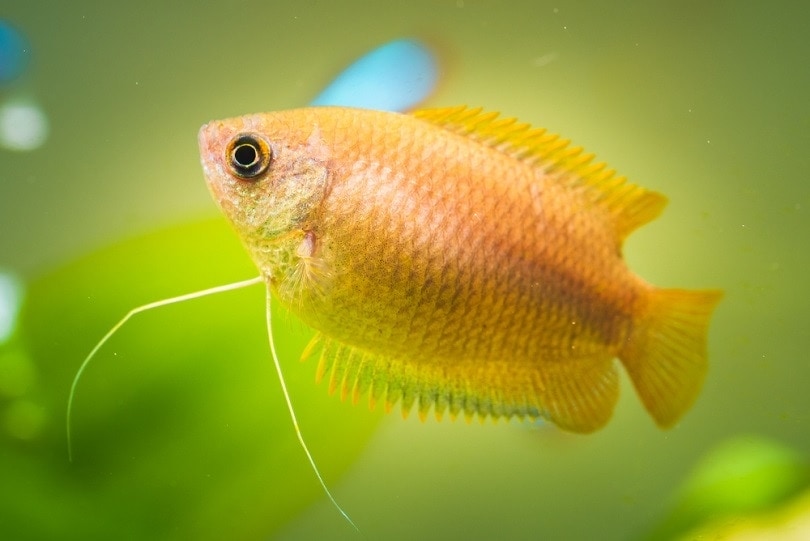
Where Do Honey Gourami Fish Prefer to Live in the Aquarium?
Honey Gouramis are labyrinth fish that can breathe air, so they tend to stay near the surface of the water. They adapted this way in their natural habitat to live in small, stagnant pools, so they are hardy fish that are generally easy to care for. They do enjoy having the cover of vegetation, though, and having a few plants near the top of your tank is ideal.
Water Parameters
Gouramis are found throughout eastern and southern Asia in slow-moving rivers, wetlands, and small pools. They are some of the hardiest aquarium fish around and can live in various tank environments. Ideally, though, they’ll need a pH of between 6.8 and 7.8, and the water temperature should stay between 75° and 80° F.
Size
Honey Gouramis can grow to 12 inches long in captivity and will need a tank of at least 75 gallons to stay happy. They are also extremely long-lived fish in captivity. While they typically live for around 7 years, they have been recorded living for up to 25 years in some cases.
Aggressive Behaviors
In general, Honey Gouramis are not aggressive fish, although males can become aggressive toward each other when they feel threatened. Males are also known to be aggressive toward other, smaller fish in the tank, especially those with long, flowing fins and bright colors, as these present potential competition for Gourami females. Females are generally peaceful and rarely bother other fish.
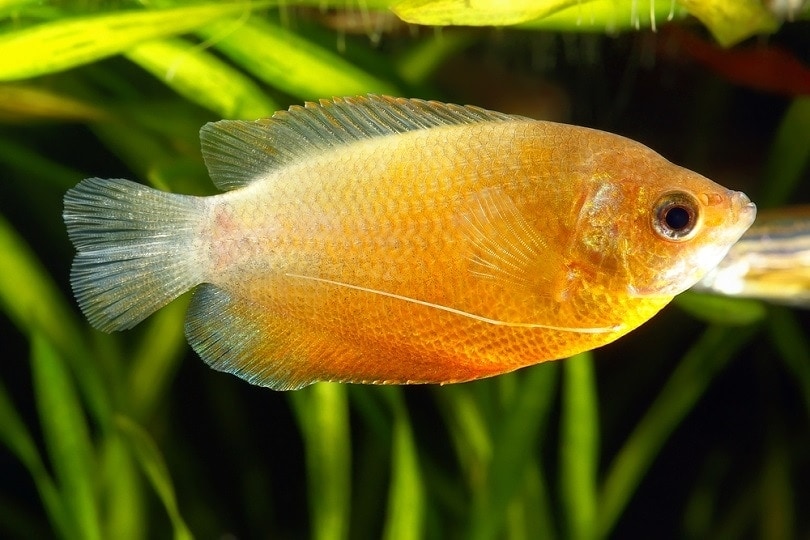
Benefits of Having Tank Mates for Honey Gourami Fish in Your Aquarium
In general, Gouramis are not schooling fish and prefer the company of their own species. They do tolerate other fish species, though. Giving them a few tankmates can have several benefits, including:
- Visual variety. While Gouramis are beautiful fish on their own, they tend to stick to the top of the aquarium, and having middle-layer fish and bottom-feeders will add to the beauty of your tank.
- Bottom-feeders will eat leftover food and algae, keeping your tank clean, hygienic, and algae-free, thus keeping your Gouramis healthier overall.
Tank Mates to Avoid
Gouramis will view any fish that are brightly colored or have long flowing fins as a threat, so the following species should be avoided as tank mates:
- Goldfish
- Betta fish
- Angelfish
- Guppies
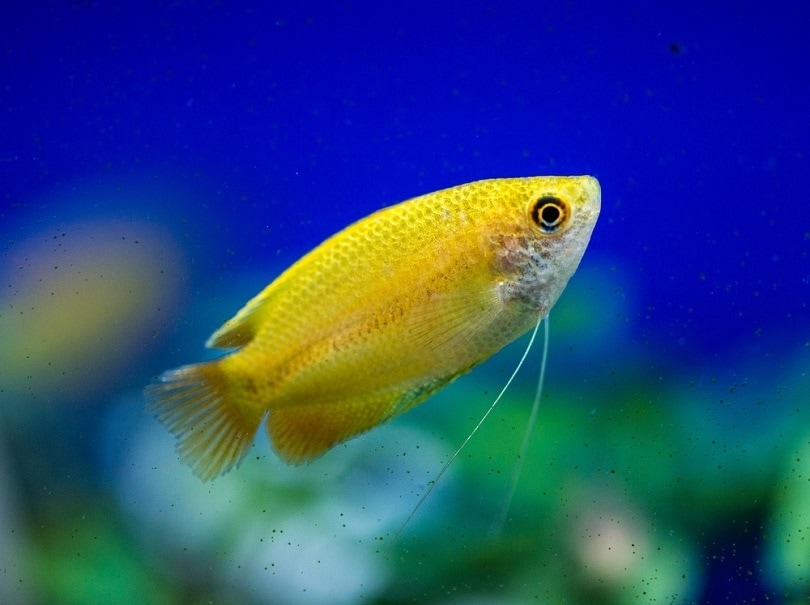
Conclusion
Sunset Gouramis are beautiful fish all on their own, but a few tank mates will add to the visual appeal of your tank and even help keep it clean and hygienic. Since these fish are fairly docile and non-aggressive, fish with a similar temperament will make great tank mates for them. Gouramis tend to stick near the surface of the water, so most fish that primarily inhabit the middle or bottom layers of a tank and are docile and peaceful will likely make ideal tankmates!
Featured Image Credit: Colisa lalia Joos, Shutterstock


